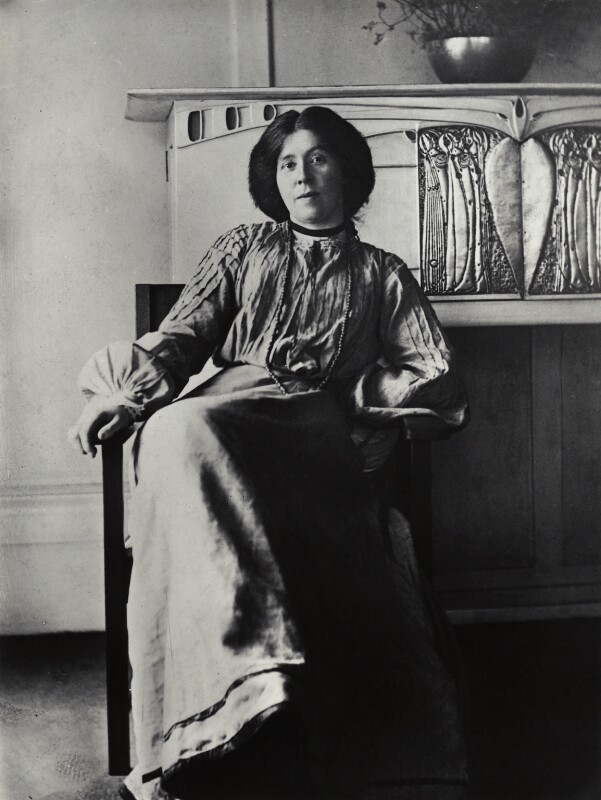1864 - 1933
By: Donald Tang | Date Added:

Margaret Macdonald Mackintosh was born on November 5 1864 – 7 January 1933, she was an English-born artist who worked in Scotland, and whose design work became one of the defining features of the "Glasgow Style" during the 1890s. Born Margaret Macdonald, at Tipton, near Wolverhampton, her father was a colliery manager and engineer. Margaret and her younger sister Frances both attended the Orme Girls' School, Newcastle-under-Lyme, Staffordshire; their names are recorded in the school register. In the 1881 census Margaret, aged 16, was a visitor at someone else's house on census night and was listed as a scholar. By 1890 the family had settled in Glasgow and Margaret and her sister, Frances Macdonald, enrolled as day students at the Glasgow School of Art studying courses in design. There she worked in a variety of media, including metalwork, embroidery, and textiles. She began collaborating with her sister Frances, and in the 1890s the pair opened the Macdonald Sisters Studio at 128 Hope Street, Glasgow. Their innovative work was inspired by Celtic imagery, literature, symbolism, and folklore. She later collaborated with her husband, the architect and designer Charles Rennie Mackintosh, whom she married on 22 August 1900. Her most well-known works are the gesso panels made for interiors designed with Charles, such as tearooms and private residences. Charles Rennie Mackintosh is frequently claimed to be Scotland's most famous architect. Margaret Macdonald Mackintosh was somewhat marginalized in comparison. Yet she was celebrated in her time by many of her peers, including her husband who once wrote in a letter to her, "Remember, you are half if not three-quarters in all my architectural work ..."; and reportedly "Margaret has genius, I have only talent." Active and recognised during her career, between 1895 and 1924 she contributed to more than 40 European and American exhibitions. Poor health cut short Margaret's career and, as far as is known, she produced no work after 1921. She died in 1933, five years after her husband. Mackintosh did not keep sketchbooks, which reflects her reliance on imagination rather than on nature. A few sources provided significant inspiration for her works, including the Bible, the Odyssey, poems by Morris and Rossetti, and the works of Maurice Maeterlinck. Her works, along with those works of her often collaborating sister, defied her contemporaries' conceptions of art. Gleeson White wrote, "With a delightfully innocent air these two sisters disclaim any attempt to acknowledge that Egyptian decoration has interested them specially. 'We have no basis.' Nor do they advance any theory." The beginning of her artistic career reflects broad strokes of experimentation. Largely drawing from her imagination, she reinterpreted traditional themes, allegories, and symbols in inventive ways. For instance, immediately following the 1896 opening of her Glasgow studio with her sister, she transformed broad ideas such as "Time" and "Summer" into highly stylized human forms. Many of her works incorporate muted natural tones, elongated nude human forms, and a subtle interplay between geometric and natural motifs. Above all, her designs demonstrated a type of originality that distinguishes her from other artists of her time.
click hereShare your thoughts on this story with us. Your comments will not be made public.
Email
Copyright ©2016 - Design By Bureau Blank